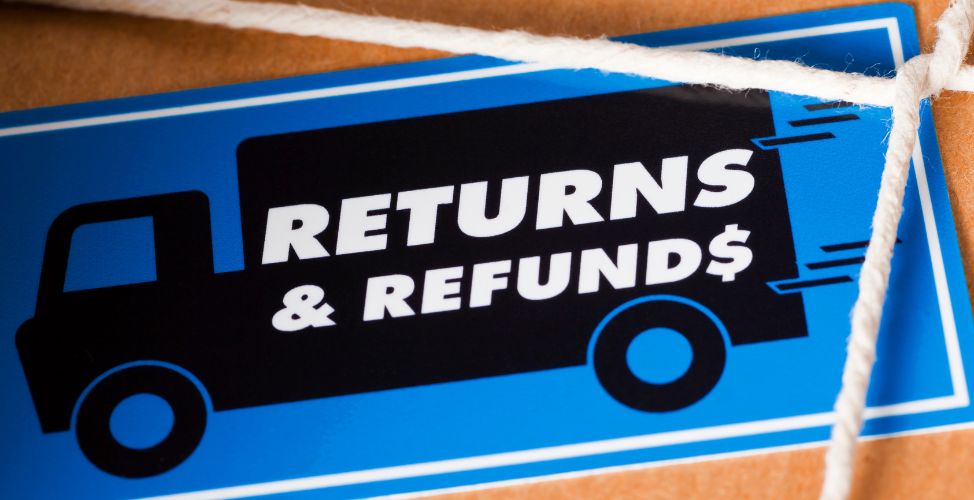Product returns are an integral part of every e-commerce business, especially unpleasant when high-quality, undamaged items are returned. Sellers often take each return personally, assuming the customer didn’t like the product. In reality, buying and returning goods online has become so easy that customers may return items without a significant reason. Therefore, sellers are advised to swallow this bitter pill, familiarize themselves with Amazon’s return policy, and not take returns personally.
Customer is always right
Selling on Amazon is based on the well-known rule that the customer is always right, so buyers can return items purchased on Amazon with almost no restrictions. Regardless of whether the item is damaged or high-quality, often even without the original packaging, and in the United States, items can be returned to physical Amazon centers unpacked and without return labels.
Typically, buyers can return items purchased on Amazon within 30 days of delivery, but the holiday season is approaching – the frenzy of purchases (and, of course, returns). In 2022, Amazon extended the return period for items purchased during the Christmas season. This proved successful, so this year, buyers can return items purchased from November 1st to December 31st throughout January.
Therefore, don’t rush to calculate Black Friday and holiday season sales profits in December or January. Wait until all returns are processed, as January tends to have the highest return rates for all sellers. However, always strive to optimize the content of your Amazon listings and advertising campaigns. Also, aim to collect as many genuine reviews and feedback as possible, as this helps reduce the number of returns.
How does the return of products on Amazon work?
When a product is returned by a buyer to Amazon, it undergoes an assessment of its condition – whether the item is suitable for further resale or not. If the product is undamaged and in sellable condition, it is returned to inventory.
If the item is unsuitable for resale, an evaluation is conducted to determine who caused the damage – Amazon, the courier, or the buyer. If the fault lies with the courier or the buyer, the financial losses fall on the shoulders of the sellers. However, if Amazon admits fault, sellers are entitled to reimbursement for returns. The compensation should be paid automatically, but in practice, there are various situations, so sellers must track and control the actual FBA inventory and the reports provided by Amazon to recover from Amazon damaged, lost in-stock, etc. products and get compensation. DIGITAL FREAKS agency provides an Inventory Reconciliation service and helps to recover money owed to sellers.
Such items will be marked with a special designation in the Amazon Seller Central account, and sellers decide what to do with them. Within 30 days, a decision must be made whether to reclaim the items or let Amazon dispose of them. When planning to sell on Amazon, it’s crucial to keep in mind that this is one of the least pleasant processes. Reclaiming items, repackaging them, and reshipping them to Amazon warehouses take a significant amount of time and might not be financially viable. Therefore, sellers often choose to dispose of items. In this case, you must refund the buyer, cover the return costs to the Amazon warehouse, and lose the product.
If the value of the item is too low, return costs are too high, or it’s challenging to resell the item, Amazon not only refunds the buyer but also leaves the item with them. In a way, this decision is sometimes beneficial for sellers, but dissatisfaction may arise from the fact that Amazon does not provide the exact amount at which items are not reclaimable from the customer, and it autonomously refunds the buyer without the seller’s knowledge.
What fate awaits returned products on Amazon?
Understanding the significant role selling on Amazon plays in global e-commerce, it’s not hard to imagine the volumes of products returned and, subsequently, liquidated daily. In times when we emphasize environmental concerns, reducing consumption, and business responsibility, destroying quality products would be a severe offense. Amazon puts increasing efforts each year into finding new life for such items.
Today, there are three possible fates for returned products:
- FBA Liquidations Program. When sellers express their intention to participate in the program through their Amazon Seller Central account, Amazon assesses the suitability of your products for the program, establishes an average price, and then wholesale liquidators can purchase your returned items. On average, they pay 5-10% of the average price that Amazon will pay you within 60 days. Financially, it may not be a significant amount, but it still offers the opportunity to recover at least some money, plus avoid additional fees for Amazon to destroy the items.
- FBA Grade and Resell. Choosing this option, Amazon will reevaluate your returned items and accordingly change their condition to “Used – Very Good,” “Used – Good,” “Used – Acceptable,” and so on. New Amazon listings will be automatically created, and a new price will be set for buyers to purchase the products.
- FBA Donations. If you are selling in the US market, you have the option to donate returned items to selected charitable organizations. By donating, you reduce waste, avoid financial costs for reclaiming or destroying goods, and most importantly, you contribute to a good cause.
More: https://www.junglescout.com/blog/amazon-return-policy-for-sellers/.
As a representative of the e-commerce business, you undoubtedly know how challenging product returns can be at times, especially for high-quality items. However, it’s an inevitable part of this industry. Amazon provides highly favorable conditions for buyers to return purchased products, so when starting to sell on Amazon, it’s crucial to familiarize yourself with the basic aspects of how returns work on Amazon and what options sellers have. If you have any questions or seek personal consultation, we, DIGITAL FREAKS, look forward to receiving your inquiry.
